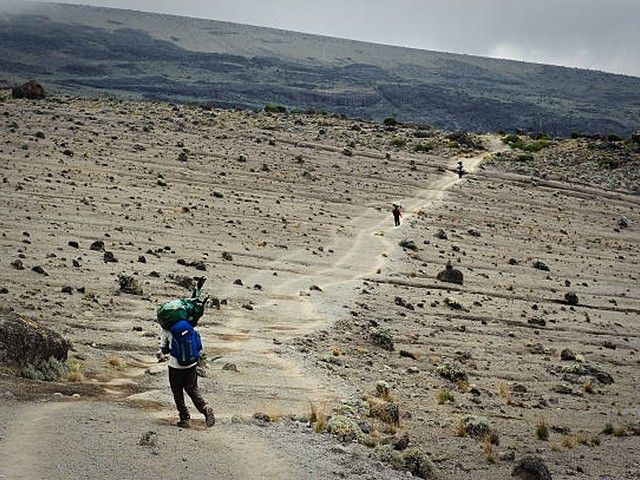Embrace the Majestic: Kilimanjaro Trek and Nature Experience for Eco-Tourists
Nestled in the heart of Tanzania, Mount Kilimanjaro isn’t just a mountain; it’s an epic journey through diverse ecosystems, a beacon for adventurers, and a paradise for eco-tourists. At Kilimanjaro Centre for Trekking and Ecotourism (KCTE), we invite you to embark on a once-in-a-lifetime trek that does more than challenge your physical endurance. It awakens your spirit, respects the natural world, and provides an immersive experience in one of the planet’s most stunning ecological wonders.
Why Choose Kilimanjaro for Your Eco-Tourism Adventure?
A Trek Through the Clouds
Mount Kilimanjaro, the highest peak in Africa, offers more than just climbing. It is an ecological treasure trove, rising through lush rainforests, alpine meadows, and arctic summits. This variety means that eco-tourists can experience dramatic changes in flora and fauna within a short span of time and distance, making Kilimanjaro a unique study in climatic and ecological diversity.
Sustainable Trekking: A Core Principle
At KCTE, sustainability isn’t just a buzzword—it’s at the core of everything we do. We understand that maintaining Kilimanjaro’s breathtaking beauty means respecting its fragility. Our guided treks are designed to ensure that every step you take leaves the lightest possible footprint, using established trails, eco-friendly campsites, and practices that preserve the mountain’s ecology.
Dive Into the Eco-zones of Kilimanjaro
The Rainforest: Nature’s Symphony
Begin your ascent through dense rainforests that cloak Kilimanjaro’s lower slopes. This humid, misty jungle is alive with chattering blue monkeys, colorful turacos, and the distant calls of bush babies. It’s a lush, green world where every inch is covered with life, offering eco-tourists an unparalleled opportunity to witness biodiversity at its most vibrant.
The Heath and Moorland: Where Giants Dwell
As you climb higher, the forest thins into heath and moorland, characterized by giant heathers and lobelias that seem to touch the sky. This zone offers panoramic views and the chance to spot unique high-altitude birdlife and mammals such as the elusive Kilimanjaro tree hyrax.
The Alpine Desert: Stark Beauty
Above 4,000 meters, vegetation becomes sparse, creating an almost lunar landscape. This alpine desert supports only the hardiest of life forms, adapting to extreme temperatures and limited water. The simplicity and solitude of this zone make it a profoundly beautiful and introspective phase of the trek.
The Arctic Summit: The Roof of Africa
Reaching the summit area, eco-tourists are rewarded with spectacular ice cliffs and glaciers, an awe-inspiring reminder of Kilimanjaro’s ancient ice-covered past. Standing at Uhuru Peak, 5,895 meters above sea level, you are literally on top of Africa, with the continent spread beneath you in all its grandeur.
Best Practices for Eco-friendly Trekking
At KCTE, we are committed to ensuring that your journey is as environmentally responsible as it is breathtaking. We emphasize:
- Leave No Trace: Pack out what you pack in, minimize waste, and treat the natural habitats with respect.
- Support Local: Hiring local guides and porters not only enhances your experience with their knowledge and cultural insights but also supports the local economy.
- Conserve Water: Water is precious on the mountain. Using it sparingly and avoiding pollutants is crucial.
- Respect Wildlife: Observe animals from a distance, do not feed them, and do not disturb their natural behaviors.
Why Book Your Kilimanjaro Adventure with KCTE?
Kilimanjaro Centre for Trekking and Ecotourism isn’t just about leading tours; we’re about creating mindful, inspiring experiences that honor both the mountain and its visitors. Our expert guides are trained in ecological conservation and safety, ensuring a journey that’s safe, enlightening, and harmonious with nature.
Health and Safety Protocols
We adhere to the highest standards of safety, with medically trained guides, emergency response plans, and regular health checks, ensuring you can focus on the beauty around you without worry.
Customized Eco-Tours
Whether you’re a seasoned hiker or a curious newbie, we offer customized tours that match your fitness level and ecological interests, from shorter treks to the full summit challenge.
FAQs: Plan Your Kilimanjaro Trek
What is the best time to climb Kilimanjaro?
The best times are during the dry seasons: January to mid-March and June to October.
How fit do I need to be?
You should be in good health and able to walk for several hours over uneven terrain. Prior training is highly recommended.
What should I pack?
Essential items include sturdy hiking boots, thermal layers for the summit, a sleeping bag suitable for freezing temperatures, sun protection, and a reusable water bottle.
How long does the trek take?
The trek can take between 5 to 8 days, depending on the route chosen and your pace.
Ready to Explore Kilimanjaro?
Embrace the call of the wild and the challenge of the peaks. Book your Kilimanjaro trek and nature experience with Kilimanjaro Centre for Trekking and Ecotourism today. Let us guide you through an unforgettable journey, where each step supports both personal achievement and the preservation of one of the earth’s most magnificent landscapes.
Join us at KCTE, where your adventure helps protect the planet. Discover more about our tours and sustainability commitment on our website and follow our blog for more insights into eco-friendly trekking practices. Together, let’s tread lightly and celebrate the natural world.




